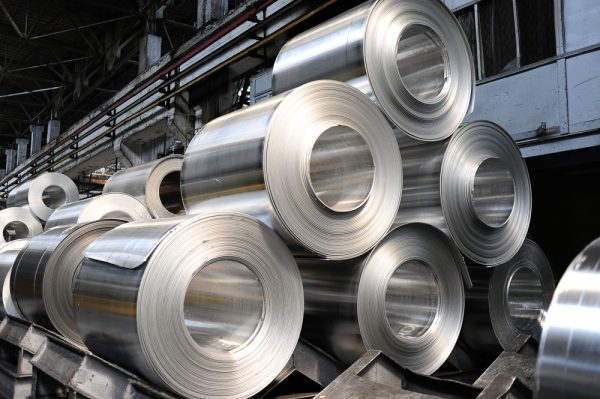What is Better for Metal Production: Stainless Steel or Aluminum?
Stainless Steel or Aluminum- what suits Metal Fabrication better?
Today, you will find the application of Aluminum and Stainless Steel for structure and parts production across various industries. For example, the marine industry makes major use of Aluminum for its corrosion-resistant and lightweight properties. Even if Stainless steel is not in the category of Non-Ferrous metals, the non-magnetic property of stainless steel makes it suitable for use across various applications. Stainless Steel or Aluminum? The following paragraphs shall discuss the key points in that regard.
Stainless Steel or Aluminum- what suits Metal Fabrication better?
Aluminum is the most suitable for metal fabrication, wherein you need the application to be lightweight and extremely precise. On the other hand, stainless steel is more suitable for heavy-duty applications.
Aluminum features higher heat-conducting properties than stainless steel.
You will find a massive application of Aluminum in automobile cooling systems and heat sinks for computers. It is for this reason that it features excellent thermal conductivity. Regarding heat transmission, stainless steel is not a suitable choice. But, the higher melting point of stainless steel makes it suitable for Metal Fabrication in instances with higher temperatures.
Stainless Steel is more corrosion-resistant than Aluminum
Manganese, Nickel, chromium, and copper are the key ingredients in Stainless steel. Chromium enhances the corrosion-resistant abilities of stainless steel. Besides, as stainless steel is Non-porous, it eliminates the chances of getting corrupted. Hence, you must apply paint or powder coating on stainless steel surfaces to prevent rusting and corrosion.
Due to its excellent Oxidation feature, Aluminum stands highly resistant to corrosion. It is for the passivation layer in Aluminum. You will find the widespread application of stainless steel in construction frames and beams. On the other hand, the aircraft industry massively utilizes Aluminum for its lightweight and high-flexibility features.
Stainless steel is a better option when you consider reactivity
Aluminum tends to react, especially with food items, causing changes in flavor and discoloration. On the other hand, stainless steel displays inactivity and is more inert. Hence, it displays the minimum tendency for reactivity. Hence, stainless steel is the most suitable choice when metal fabrication demands zero reactivity.
Weight and Tensile Strength
In terms of Tensile Strength, stainless steel is stronger than Aluminum and might be lightweight. It is why steel can withstand more force, heat, and weight. Hence, stainless steel has the minimum tendency to bend or wrap under extreme conditions. With this feature in stainless steel, the energy industry makes massive use of this metal. On the other hand, the marine and aircraft industries majorly use Aluminum for its lightweight and stainless features.
Which is the better choice in terms of Electrical Conductivity?
When considering metals for Metal Fabrication, one of the key aspects to consider is electrical conductivity. In that regard, stainless steel shall trail well behind Aluminum, one of the best electrical conductors. For optimum electrical conductivity, lighter weight, and corrosion-resistant features, aluminum sheet finds massive application in high-voltage power lines, air conditioning units, and car radiators. So when you need a metal with the highest electrical conductivity, it will help to bank on Aluminum.
What are the Differences in terms of Fabrication Methods?
Even if it is difficult to weld Aluminum, it takes the minimum effort to mold or cut to produce the desired shape. On the other hand, stainless steel is the ideal choice for fabrication when it needs to produce crisp edges and eliminate all chances of cracking during the fabrication process. It will help if you utilize stainless steel in welding, wherein you have to produce the longest-lasting joints. Similarly, stainless steel is the best choice for fabrication for creating rigid and durable structures that stay functional for the longest term.
Regarding the Linear Expansion Coefficient, Aluminum has double the stainless steel capacity. It is for this reason that it is more suitable for restrained welding. Another striking point between stainless steel and Aluminum is that, contrary to stainless steel, Aluminum will not show color changes as the fabrication process approaches the melting point. In terms of malleability and elasticity, Aluminum shows higher capacities than stainless steel. On the contrary, Aluminum gets dented and scratched. It makes the metal unsuitable for application in heavy-duty applications.
Final thought
From the discussion above, it comes out that you should select between stainless steel and Aluminum for metal fabrication depending on the outcome that you need to serve. Stainless steel is always the desired choice when the output needs more cohesive strength. Aluminum is the ideal choice if you need to keep the weight lighter and have the optimum preciseness in the outcome.
Crescocustommetals.com offers a plethora of Fabrication services. Their service fee is competitive, and they offer tailor-made solutions to your needs.



